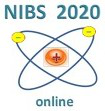Speaker
Description
Since present-day high-power negative hydrogen ion sources are based on the surface conversion mechanism of atomic and ionic hydrogen species, they rely on a low work function converter surface. Currently, the alkali metal Cs (bulk work function of 2.14 eV) is continuously evaporated onto refractory metals during the ion source operation to generate low work function coatings by chemisorption. However, the high chemical reactivity and volatility of Cs coatings are major drawbacks in terms of a stable and long-term reliable ion source performance. Thus, Cs-free alternatives for the H$^-$ converter surface are highly desirable and an active research topic in ion source development. Since the material requirements for an implementation in ion sources are demanding, i.e., machinability and stability at ambient conditions as well as resilience against the plasma load while providing an efficient H$^-$ conversion yield, no viable alternative to Cs has been found so far [1,2].
A promising candidate possibly fulfilling the requirements for an ion source converter surface is the ceramic [Ca$_{24}$Al$_{28}$O$_{64}$]$^{4+}$(e$^-$)$_4$, known as C12A7:e$^-$ [3]. It is the first reported electride which is chemically and thermally stable in ambient atmosphere and the pure surface provides an intrinsic low work function of 2.4 eV at ultra-high vacuum conditions [4]. However, it is well known that the surface work function of this material is particularly sensitive to impurities, and it is very challenging to prepare chemically pure surfaces [4,5]. Thus, C12A7:e$^-$ samples from different manufacturers (Fraunhofer IKTS and AGC Inc.) were investigated at the laboratory experiment ACCesS [6], which provides vacuum and plasma conditions comparable to those close to the converter surface in H$^-$ sources for fusion. At the setup, the surface work function can be measured absolutely via the photoelectric effect [7]. Campaigns regarding the work function dependence on the surface temperature and plasma exposure time in H$_2$ and D$_2$ with and without bias have been performed. It is shown that the work function can be reduced by vacuum heat treatment. The application of hydrogen plasma leads to a further decrease of the work function, and a quick regeneration after surface degradation due to residual gas adsorption. Long-term plasma exposure exhibits a steady-state work function below 3 eV. Biasing has shown a work function dependence from the polarity and the applied bias potential. In general, the C12A7:e$^-$ materials have demonstrated promising properties in terms of plasma resilience, but the reached work function is still substantially higher than what is achieved with the state-of-the-art technique of in situ caesiation.
References
[1] U. Kurutz, R. Friedl, and U. Fantz, Plasma Phys. Control. Fusion 59 (2017), 075008.
[2] U. Fantz, C. Hopf, R. Friedl, S. Cristofaro, B. Heinemann, S. Lishev, and A. Mimo, Fusion Eng. Des. 136 (2018), 340.
[3] S. Matsuishi, Y. Toda, M. Miyakawa, K. Hayashi, T. Kamiya, M. Hirano, I. Tanaka, and H. Hosono, Science 301 (2003), 626.
[4] Y. Toda, H. Yanagi, E. Ikenaga, J. J. Kim, M. Kobata, S. Ueda, T. Kamiya, M. Hirano, K. Kobayashi, and H. Hosono, Adv. Mater. 19 (2007), 3564.
[5] Y. Toda, Y. Kubota, M. Hirano, H. Hirayama, and H. Hosono, ACS Nano 5 (2011), 1907.
[6] R. Friedl, S. Cristofaro, and U. Fantz, AIP Conf. Proc. 2011 (2018), 050009.
[7] R. Friedl, Rev. Sci. Instrum. 87 (2016), 043901.
Acknowlegdements
The authors would like to thank the Fraunhofer IKTS (Institute for Ceramic Technology and Systems, Germany) and AGC Inc. (Japan) for providing the C12A7:e$^-$ electride samples.
This work has been carried out within the framework of the EUROfusion Consortium and has received funding from the Euratom research and training programme 2014-2018 and 2019-2020 under grant agreement No 633053. The views and opinions expressed herein do not necessarily reflect those of the European Commission.

